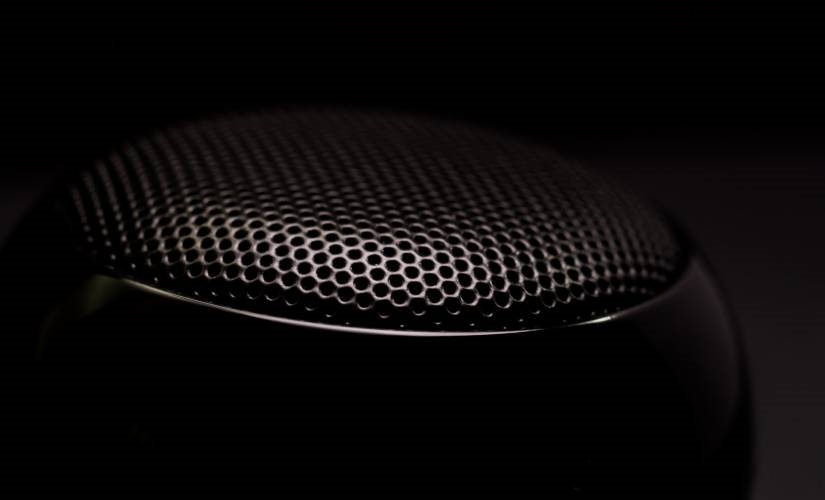How Voice Assistant Marketing Can Future-Proof Your Brand
How Voice Assistant Marketing Can Future-Proof Your Brand

“Hey, Siri,” “Alexa!,” “OK, Google.” There’s a good chance you say at least one of these three names more than any other in a single day. The number of devices and uses for voice personal assistants is growing at a remarkable pace. Allied Market Research predicts the intelligent voice assistant market will grow to $3.6 billion by 2020.
For marketers, this creates new challenges — and, more importantly, new opportunities. If you only ever do what worked best in the past, you will miss out on the huge market voice assistants are capturing. By testing new tools and ideas in your marketing DNA and having an open mind about the power of Siri, Alexa, and Google assistants, you can future-proof your brand and get ahead of the competition.
How do you get onboard with voice assistant marketing, craft content that resonates with your customers, and does it all in a way that creates value and drives results? Use these four simple strategies to inform your voice assistant marketing:
Look, Mom, No Hands
As you know, the voice assistant market is dominated by four key players: Apple with Siri, Google with Google Assistant, Amazon with Alexa, and Microsoft with Cortana. (For this article, we will focus on the top three. Sorry, Cortana.) These tools have become ingrained in our lives, but let’s take a moment to revisit their original, unique intentions.

Siri was designed by Apple to be used on your iPhone (it’s available on other Apple devices, including HomePod, but that wasn’t the primary intention). It aims to deliver relevant information (Siri’s search is powered by Bing) and performs actions with your voice (for example, navigation using Apple Maps).
Alexa is available on a variety of home devices and is designed to help within your home environment. It’s less about accessing information on the go and more about fitting into your normal routine. This could mean anything from creating a shopping list and ordering items via Amazon to adjusting your air conditioning using your Nest thermostat.
Google Assistant works both on mobile and on Google Home devices, learning and expanding its skills every day. Two of its strongest advantages are an advanced level of natural language processing and using semantic search — focusing on the intent rather than the direct meaning of the search phrase.
While these voice assistants have a few distinctive features, they all exist to help consumers discover the high-quality, relevant information they are looking for, using only their voice. Your job, as a marketer, is not to force but rather find a way to fit seamlessly into that consumer experience.
Help Me If You Can
Despite their differences, voice assistants aim to help users the best way they can. But to use them effectively, it’s important to understand what ‘help’ they can provide and how that applies to branding.
There are two types of responses generated by voice assistants: answers and actions.
Answers include information from relevant search engines in response to questions. Depending on the query, search results, and the assistant’s capability, it will either reproduce the results with voice (Google Assistant and Alexa, I’m looking at you!) or offer a web page where you can find the answer to your question (Siri does this more often than other assistants).
Action responses save you time by having the assistant perform an action for you: “Take a photograph,” “Set Nest temperature in the living room to 70 degrees,” “Play calm sleep stories,” and so on. These are just a few skills these brands’ developers have enabled on the voice assistant platforms.
As voice assistants become more ingrained in our lives, new opportunities for different forms of content also arise. A recent study from National Public Radio found 29 percent of smart speaker owners use their device several times a day. It follows that users are ready for voice assistants to do more than answer questions or turn off lights. Similar to the way phones evolved to place a camera, games, and endless apps in users’ hands, voice assistants will soon provide more engaging entertainment on command.
The number of voice games on Alexa is a clear example of this shift. They’re becoming so popular that in August, Amazon announced a challenge to develop game skills and awarded €50,000 to the winners. As a marketer, you can jump on this new trend to create games and quizzes — both informational and fun — for your audience to enable on voice assistants.
When creating your voice assistant marketing strategy, be very clear about what result you want the assistant to generate for the user. Do you want to offer information or would you like a user to take action? Depending on that outcome, you will either need to optimize your content for voice search or develop a skill for the voice assistant of your choice (or all the assistants, if you have enough time and resources).
Most importantly, remember the content delivered by a voice assistant is meant to serve the user. Your brand takes the back seat. Great marketers need to refocus on how they can create content that offers a solution to a problem. Even if your product goes hand-in-hand with the solution, achieving a sale is not the primary purpose of the content.
I Hear You
Once you know what result you want to generate, it’s important to understand the types of content that can be discovered by voice assistants.
Different assistants pull data from different search engines. So the first thing you need to do is make sure you are on top of your SEO game. Voice assistants like information that is clear and concise (around twenty-nine words), relevant, and available on websites with higher domain and page authority.
Remember, everything from backlinks to your domain authority impact search results. So even if you’re not envisioning a piece of content to be voice assistant-friendly, it needs to be optimized. Establishing strong SEO throughout your website bolsters the credibility of all your content. This supports your content that is aligned with voice assistant searches.
To serve answers promptly, voice assistants often return “snippet” results. Snippets are the short responses that give the most pertinent information from a webpage. While the page contains more in-depth details, the voice assistant will focus on the main gist in a snippet the user can quickly absorb. This means you need to make sure your content can easily be condensed into a valuable snippet. Having clear and concise introductions in your content will help facilitate sharing via voice assistants.
Assistants also use schema (metadata about data) to identify speakable content within your website. Including speakable content, tags are something you should discuss with your web developer. Voice assistants are getting smarter about search results based on the quality and relevance of these parameters every day.
When optimizing your content, there is one fundamentally important point to remember: always create your content with your users’ intents in mind. Many companies make a mistake of focusing strictly on long-tail keywords as a way to address their users’ needs (don’t get me wrong, long-tail keywords are an excellent strategy for SEO). However, what you should be focusing on are questions your users would ask their voice assistant and how your content can provide the most valuable answers.
For example, a spaghetti sauce producer could create a perfectly optimized series of content about why their sauce is the best. The colorful dialogue might share authentic ingredients, the many health benefits of a Mediterranean diet, or the story of how the recipe came to America with a little Italian Nonna. While these topics could be part of a great marketing strategy, they will not be a result when a user asks Alexa how to make spaghetti.
Last but not least, as voice assistants read the content they find aloud, the tone of voice of your content becomes as important as ever. Your audience should feel as though they hear an engaging story. If your content is overrun with run-on sentences or has a monotonous rhythm, listeners will tune out. The content will be of no value to them.
Let’s Get Personal
One of the biggest draws of voice assistants is their artificial intelligence capabilities. The more users interact with these devices, the more the assistants learn. Over time, they can return more personalized results that match users’ unique needs.
For marketers, this means with voice assistants, you can cater to the customer based on who they are and not just their behavior. While it’s still early when it comes to personalization of the user experience through voice assistant interaction, this is certainly a huge opportunity for marketers.
While it’s not a possibility yet, imagine how your strategies would improve if you knew more about the personal preferences of an individual audience member. You could create different pieces of content on a particular topic, but each could have their own tone or take that matches the individual. Understanding those needs would increase the odds of being a result a voice personal assistant would return. Keep an eye on technologies and platforms that enable this type of personalization in the years to come.
As you look long-term at your voice assistant marketing plan, be sure to notice trends in the growing popularity of the different devices. For instance, the formerly mentioned NPR study found a huge spike in the number of smart speaker users last year. In 2018, there were 14 million new smart speaker users. Additionally, there’s an increase in the number of smart speakers in each home. In 2017, only 38 percent of users had more than one smart speaker. In 2018, 52 percent of consumers owned multiple speakers.
Think about what this means for content marketing. People are using their devices in different rooms of their home and office, and it’s unlikely they are searching for the same information in each location. Take into consideration what people may be searching for depending on their location to customize your content even further.
For instance, is there a hack for baking soda in the kitchen, bathroom, and laundry room? If listening to music improves focus, sleep, stamina, and wellness, what kinds of information or actions might a user request from a voice assistant depending on the area of the home they are active in?
Please, Go On
Voice assistants are constantly evolving to better meet users’ needs. Every year, Stone Temple conducts a study to determine how accurate the results are from different voice assistants. They ask each version 4,952 questions. In 2018, Google Assistant for Smartphone had fewer than 40 incorrect responses. Alexa improved leaps and bounds attempting to answer 2.7 times more questions than 2017.
For marketers, like you, this means it’s time to start thinking about the “next step.” One intriguing trend that is developing is enhancing the ability to have a conversation with a voice assistant. Last year, Alexa released follow-up mode which allows the device to respond to multiple queries in a row without having to repeat “Alexa” to wake it up. And Google Assistant can now understand two different commands at a time. It won’t be long before voice assistants can sustain much longer conversations with users, answering follow-up questions and providing seemingly limitless information.
Marketers should prepare for this advanced user/assistant relationship by creating content that follows the natural flow of conversation. When outlining a piece of content, consider the next logical line of inquiry and begin building out a matrix of additional content that answers users’ questions well in advance. This will keep consumers engaged with your content and brand for a much longer and more meaningful period of time.
Technology is constantly changing how marketers approach their branding strategies, and voice assistants are making big waves. By understanding what makes this technology unique, your brand marketing can evolve with the changing needs of your customers.
The post How Voice Assistant Marketing Can Future-Proof Your Brand appeared first on ReadWrite.
(24)


